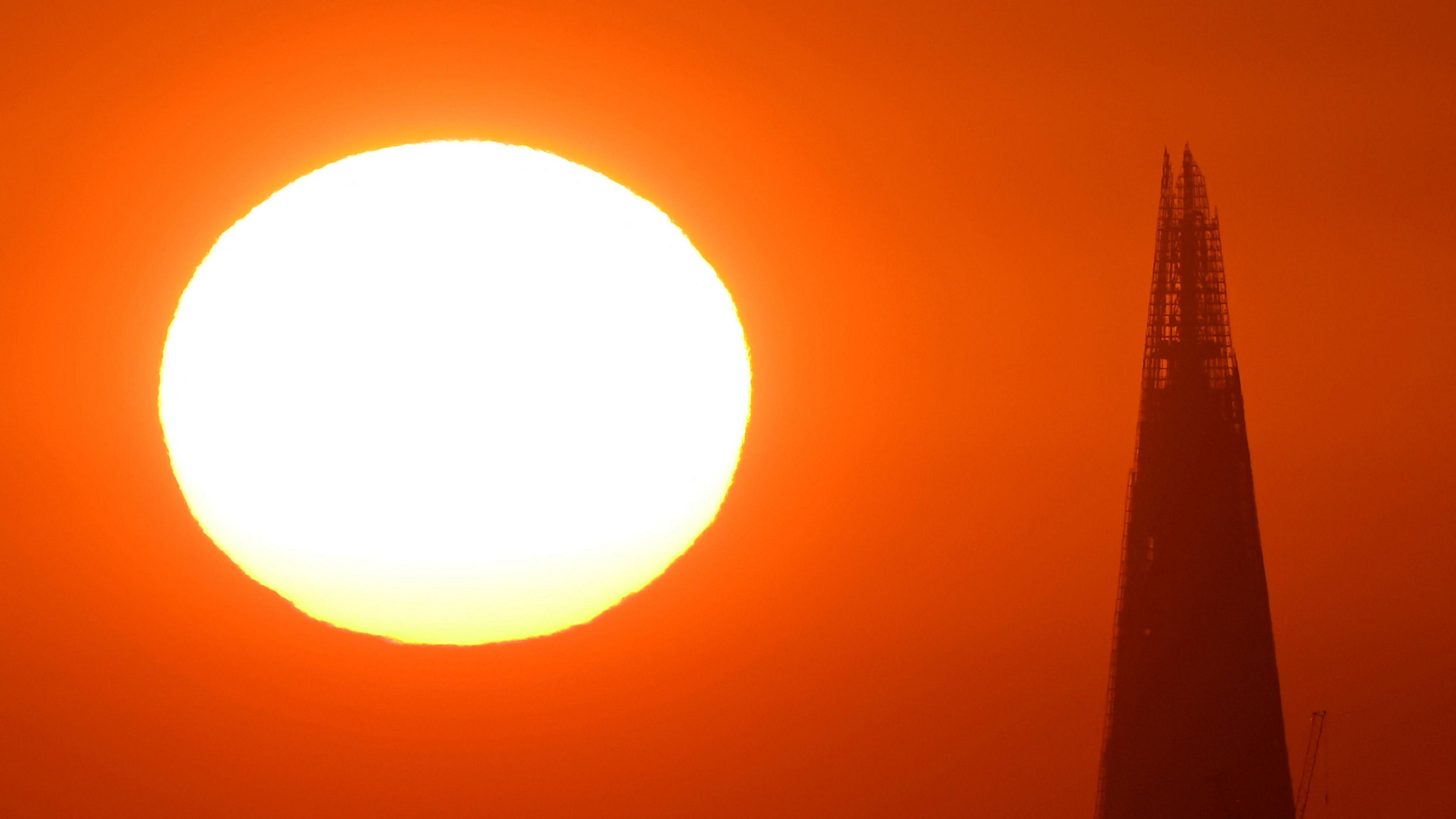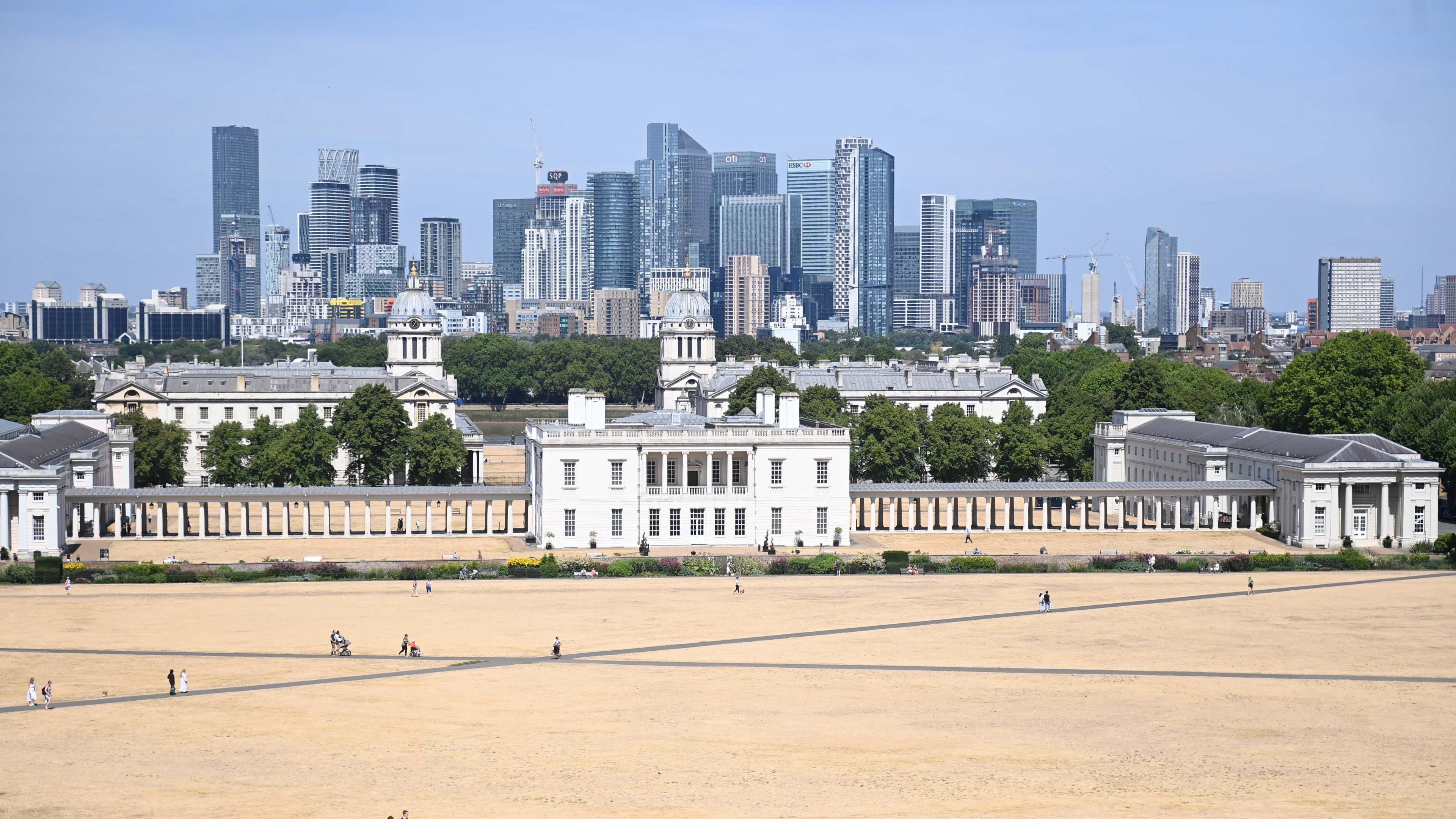 Image source, Reuters
Image source, Reuters
Ben Rich
Lead Weather Presenter
The temperatures we are experiencing as part of the current heatwave are expected to peak on Monday in the cities of London and Cambridge.
You may have noticed that temperatures are often much higher in urban areas than in the surrounding countryside.
That is because of something called the urban heat island effect.
It helps to explain why built-up areas can be several degrees warmer than nearby rural places, during the day and overnight.
It leaves people living in cities more vulnerable to the impacts of climate change.
What are urban heat islands?
During heatwaves, city centres are on average 4-6C (39-43F) warmer than surrounding areas according to the European Commission Joint Research Centre, external.
In extreme cases the difference can be as much as 10C (50F), especially in very calm weather with little wind to mix the air.
A key reason for this contrast is the hard, dark-coloured surfaces, like buildings and roads, that dominate urban landscapes.
They absorb the Sun's energy rather than reflecting it, meaning they store heat. This is then slowly released into the surrounding air leading to higher temperatures, especially at night.
Waste heat generated by air conditioning units, vehicles - and humans - adds to this even further.
 Image source, EPA-EFE/REX/Shutterstock
Image source, EPA-EFE/REX/Shutterstock
The urban heat island effect is most pronounced in the largest cities, such as London
In the countryside trees, rivers and lakes provide natural cooling and a source of moisture.
Some of the Sun's energy is used in evaporating this moisture which leaves less to heat the land and the air, limiting the temperature rise.
Cities tend to have less vegetation and fewer water sources meaning the ground and the air heat up more readily.
This phenomenon also helps to explain why the very hottest days tend to be after a long spell of dry weather. The less moisture there is to evaporate, the more energy remains to lift temperatures.
Is climate change making things worse?
Extreme heat can be very uncomfortable and also dangerous.
Dehydration and heat stroke can occur when temperatures rise, and urban heat island effects can also help to trap pollution leading to poor air quality.
Climate change does not cause urban heat islands but because cities tend to be hotter, they are likely to be worst-affected by rising global temperatures.
According to the UN, 55% of the world's population live in urban areas. This is projected to increase to 68% by 2050.
As climate change makes heatwaves more frequent and more intense, it will be cities - and their growing populations - that bear the brunt of extreme heat and the significant impacts it can bring.
Tackling urban heat
Planners in some of the world's major cities are taking measures to mitigate and adapt to the building heat.
In Singapore, authorities are incorporating open spaces, external around buildings and lighter colours on walls and roofs, as well as increasing the amount of greenery in the city.
Nearly half of Singapore is now green space and more than half a million trees have been planted since 2020 - with an eventual target of one million trees by 2030.

Singapore's meteorological service says the city is warming twice as quickly as the rest of the world
In Spain, Barcelona has a growing network of more than 400 free climate shelters, external where people can shelter from extreme summer heat as well as from winter cold.
These offer a maximum temperature of 26C (79F) and must provide comfortable seating and free drinking water.
Other cities including Paris, Buenos Aires and New York have introduced similar initiatives.
Meanwhile in Phoenix, Arizona, researchers have been trialling lighter-coloured roads and pavements in an attempt to reduce heat in the urban centre.
.png)
 5 months ago
20
5 months ago
20








 English (US) ·
English (US) ·